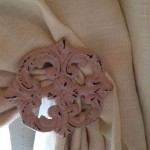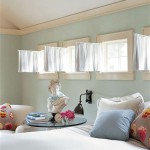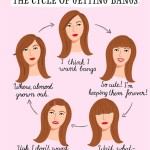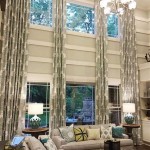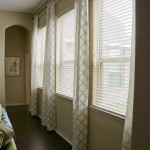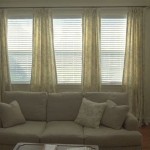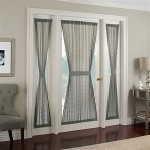The Art of Tying Curtains in the Middle: Aesthetics, Functionality, and Implementation
Tying curtains in the middle, often referred to as draping or using tiebacks, represents a versatile method for enhancing the visual appeal of window treatments while simultaneously controlling light and privacy. This technique goes beyond simply drawing curtains open or closed, introducing an element of style and sophistication to interior spaces. The practice involves securing the curtain fabric in a gathered manner at a central point, typically using fabric ties, cords, or decorative accessories. The effectiveness of this technique hinges on understanding its aesthetic impact, functional benefits, and the various methods for proper implementation.
The historical roots of curtain tiebacks extend back centuries, evolving from purely functional necessities to integral design elements. Initially, they served primarily to keep heavy draperies from obstructing light ingress and movement within a room. Over time, however, tiebacks became increasingly ornamental, reflecting prevailing aesthetic trends. Throughout different eras, materials and styles have varied considerably, from simple rope ties to elaborate tassels and metal hardware. This evolution underscores the enduring appeal of tying curtains in the middle as a means of adapting window treatments to diverse design sensibilities.
Aesthetic Considerations and Design Impact
Tying curtains in the middle dramatically alters the visual dynamics of a room. The gathered fabric creates soft folds and cascading lines, introducing texture and depth to the window area. This technique can soften harsh architectural lines and create a more inviting atmosphere. The choice of tieback material and style further contributes to the overall aesthetic. For example, using contrasting fabrics or embellishments adds a focal point, while simpler, more understated ties blend seamlessly with the curtain fabric for a cohesive look. The precise positioning of the tieback also plays a crucial role. A higher tieback accentuates the height of the window, while a lower tieback creates a more relaxed and grounded feel.
The color and pattern of the curtains themselves exert a considerable influence on the visual impact of tied curtains. Solid-colored curtains allow the texture and drape created by the tieback to take center stage. Patterned curtains, on the other hand, create a more dynamic and visually stimulating effect. It is important to consider the scale of the pattern when choosing a tieback. A busy pattern may be overwhelmed by an overly ornate tieback, while a simpler tieback can complement the pattern without competing with it. The selection of the appropriate tieback hardware is also critical to achieving the desired aesthetic. Metal hooks, magnetic clips, or even decorative knobs can be used to secure the tiebacks, each contributing to a distinct overall impression.
Beyond the practical function of holding curtains back, the way curtains are styled when tied significantly impacts the room's ambiance. A loosely gathered curtain creates a relaxed and casual feel, while a tightly cinched tieback presents a more formal and structured appearance. The amount of fabric exposed around the edges of the window affects the perception of light and space. Tying the curtains further back allows for more natural light to enter the room, making it appear brighter and more spacious. Conversely, a more modest tieback position provides greater privacy and light control.
Functional Benefits of Tying Curtains
Beyond its aesthetic advantages, tying curtains in the middle provides several practical benefits. Primarily, it controls the amount of natural light entering a room. By adjusting the tieback position, individuals can regulate the intensity and direction of sunlight, reducing glare and preventing excessive heat gain. This feature is particularly useful in rooms that receive direct sunlight during certain times of the day. Furthermore, tying curtains back allows for better ventilation. By creating an opening in the window, air can circulate more freely, improving indoor air quality and reducing the need for artificial cooling.
Privacy is another significant benefit offered by this technique. While fully drawn curtains offer maximum privacy, they also block out all natural light. Tying curtains in the middle allows individuals to maintain a degree of privacy while still enjoying the benefits of natural light. The amount of privacy provided depends on the position of the tieback and the density of the curtain fabric. Sheer curtains, for example, offer minimal privacy even when tied back, while heavier, opaque fabrics provide a greater degree of screening.
In addition to light and privacy control, tying curtains can also protect the fabric itself. By preventing the curtains from dragging on the floor or rubbing against furniture, tiebacks reduce wear and tear, extending the lifespan of the window treatments. This is particularly beneficial for delicate or expensive fabrics. Furthermore, tiebacks can help to maintain the shape and drape of the curtains, preventing them from becoming wrinkled or misshapen over time. This ensures that the curtains always look their best, enhancing the overall appearance of the room.
Methods and Materials for Implementation
Numerous methods and materials exist for tying curtains in the middle, allowing for customization based on individual preferences and design styles. The most common approach involves using fabric tiebacks, which are typically made from the same material as the curtains or from a complementary fabric. These tiebacks can be simple strips of fabric or more elaborate designs with embellishments such as tassels, beads, or embroidery. Fabric tiebacks are typically attached to the wall with hooks or rings, allowing for easy adjustment and removal.
Cord and rope tiebacks offer a more rustic or nautical aesthetic. These tiebacks can be made from natural fibers such as jute or hemp, or from synthetic materials such as nylon or polyester. Cord and rope tiebacks are typically tied around the curtains in a knot or loop, creating a simple and understated look. Metal tiebacks, such as chains or decorative metal pieces, provide a more modern and industrial feel. These tiebacks are typically attached to the wall with screws or nails, ensuring a secure and durable hold.
Magnetic tiebacks have gained popularity due to their ease of use and versatility. These tiebacks consist of two magnetic pieces that attach to the curtain fabric, holding it in place without the need for drilling or hardware installation. Magnetic tiebacks are available in a variety of shapes, sizes, and finishes, allowing for customization to match the decor of the room. Decorative knobs and rosettes can also be used as tiebacks, adding a touch of elegance and sophistication to the window treatment. These knobs are typically mounted on the wall and used to hold the curtains in place, creating a refined and polished look.
The placement of the tiebacks is a crucial consideration. The ideal height for the tiebacks depends on the height of the window and the desired effect. As a general rule, tiebacks should be positioned approximately one-third to one-half of the way down from the top of the window. This placement allows for a balanced and aesthetically pleasing drape. However, the exact placement can be adjusted to suit individual preferences. Experimenting with different positions can help to determine the most flattering and functional arrangement.
The choice of materials for the tiebacks should complement the style and fabric of the curtains. For example, heavy, luxurious fabrics such as velvet or silk pair well with ornate tiebacks made from metal or embellished fabric. Lighter, more casual fabrics such as linen or cotton are better suited to simpler tiebacks made from natural fibers or plain fabric. The color and pattern of the tiebacks should also be carefully considered. A contrasting color can create a focal point, while a complementary color can create a more cohesive look. Ultimately, the goal is to select tiebacks that enhance the overall aesthetic of the window treatment and complement the decor of the room.

One More Image With Two Windows Curtains Tied In The Middle

Curtain Tiebacks Diy Tips Homedecor Sparklelove

Middle Tie Curtains

Middle Tie

8 Diffe Ways To Tie Back Curtains

Long Curtains Allow For Diffe Methods Of Tying Them Up You Alternate To Change Things A Bit Maybe Do Center Tie When Entertaining But Pulled Off The Side

How To Tie Up Valance Curtains The Right Way Step By Tutorial

Curtain Tiebacks 101

Cotton Polyester Tie Back For Sidelight And Door Curtain Single Panel Etsy

Diy Macrame Curtain Tie Backs Tutorial Girl About Townhouse

